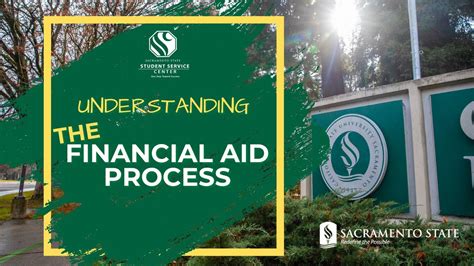Navigating the complexities of financial aid can be a daunting task, especially for students attending college. If you’re a student at California State University, Sacramento (Sac State), this comprehensive guide will provide you with a thorough understanding of the various financial aid options available to you.

Types of Financial Aid Available at Sac State
Sac State offers a wide range of financial aid programs to assist students with the cost of their education. These programs include:
- Scholarships: Awards based on academic merit, financial need, or other criteria.
- Grants: Money that does not have to be repaid, typically awarded based on financial need.
- Federal Loans: Low-interest loans borrowed from the U.S. government, divided into subsidized (where the government pays the interest during school) and unsubsidized (where the borrower pays the interest).
- Private Loans: Loans borrowed from private lenders, typically with higher interest rates than federal loans.
- Work-Study Programs: Part-time jobs on campus that allow students to earn money to help pay for school.
How to Apply for Financial Aid
To apply for financial aid at Sac State, you must complete the Free Application for Federal Student Aid (FAFSA). The FAFSA is available online at fafsa.ed.gov, and the deadline to submit your application is June 30th for the following academic year.
Tips for Completing the FAFSA:
- Gather all necessary documents, including your Social Security number, Driver’s License or State ID, and tax information.
- Create a FSA ID at fsaid.ed.gov to sign your application electronically.
- Answer all questions accurately and honestly.
- Review your application carefully before submitting it.
Determining Your Eligibility
Once you submit your FAFSA, the federal government will determine your Expected Family Contribution (EFC). Your EFC is an estimate of how much your family can afford to contribute towards the cost of your education. The lower your EFC, the more financial aid you are eligible to receive.
Factors that Impact Your EFC:
- Income and assets of your family
- Number of family members in college
- Age of your parents
Disbursement of Financial Aid
Financial aid is typically disbursed in two installments, one for the fall semester and one for the spring semester. Students can receive their financial aid in the form of a check, direct deposit, or credit to their student account.
Important Dates:
- Fall Disbursement: Funds are typically disbursed in late August or early September.
- Spring Disbursement: Funds are typically disbursed in late January or early February.
Managing Your Financial Aid
It’s important to manage your financial aid wisely. Here are some tips:
- Create a budget: Track your income and expenses to ensure you’re not overspending.
- Avoid unnecessary debt: Only borrow what you need for essential expenses.
- Explore alternative sources of funding: Consider scholarships, grants, or work-study programs to supplement your financial aid.
- Maintain good academic standing: To maintain your financial aid eligibility, you must meet the academic progress requirements set by Sac State.
Get Help with Financial Aid
If you have any questions or need assistance with financial aid, there are several resources available to you:
- Sac State Financial Aid Office: The Financial Aid Office provides counseling and assistance to students.
- Student Financial Aid Call Center: 916-278-6128
- Email: [email protected]
Additional Resources
Conclusion
Financial aid can be a valuable tool in helping you afford the cost of your education at Sac State. By understanding the various financial aid options available to you, completing the FAFSA, and managing your financial aid wisely, you can make the most of your financial aid package and achieve your educational goals.
